Results 3,091 to 3,100 of 12091
Thread: Anandtech News
-
06-21-13, 12:00 PM #3091
Anandtech: GeForce GTX Titan Two-Way SLI Scaling: PCIe 2 vs. PCIe 3
Back when I had Origin’s tri-Titan equipped Genesis in house, I received a few requests for benchmarks with PCIe 3 enabled. Because we tested the system with its default out of the box settings, the system was configured by default to only use PCIe 2 since NVIDIA does not officially support PCIe 3 on SNB-E based systems. As a result there was some interest in whether PCIe 3 would improve performance at all compared to PCIe 2, due to the high amount of PCIe bus traffic generated by three GTX Titan cards working together. IVB/Haswell is of course limited to 16 PCIe 3 lanes, whereas if PCIe 3 is enabled SNB-E systems have more than twice that with a combined total of 40 lanes, giving SNB-E a large bandwidth advantage.
As it turned out, the Intel DX79SR used in the Genesis supported PCIe 3, but only on the 2 full-fledged x16 slots. The third x16 slot (electrically x8) won’t operate beyond PCIe 2 speeds even after forcing it in NVIDIA’s drivers, which is unfortunately a bit of a double whammy since it’s the slot that’s already lacking in bandwidth. That dashed our hopes of a PCIe 3 vs. PCIe 2 comparison for tri-SLI Titans, and as a result the subject never reached print.
However in the last couple of weeks I’ve received several requests for two-way SLI Titan/780 PCIe performance benchmarks, which we did happen to collect while looking into tri-SLI and merely never published. So with that in mind we’re going to finally publish that data, since there’s clearly more interest in the matter than I initially expected.
As a heads up this data is a bit stale; it was taken back in April with NVIDIA’s 314.22 drivers. So the primary goal here is to compare two-way SLI Titan performance on PCIe 2 versus PCIe 3.
At 2560x1440 there’s very little change. The only game to see any kind of notable improvement is Total War: Shogun 2, which picks up 5%, though this is going from 115fps to 120fps. Otherwise PCIe 3 does not confer a distinct performance advantage here.
At 5760 things become more interesting, although again the performance gains aren’t particularly huge. Every game benefits at least marginally from PCIe 3 being enabled; Total War: Shogun 2 once again shows the greatest benefit at 7%, while Battlefield 3 picks up 5%, and Crysis 3 a hair over 2%.
Admittedly this is a small sample set, but it does paint a distinct picture of the PCIe bus being a bottleneck when using surround modes. NVIDIA has never gone into great detail on how their surround mode works, but based on this and previous data we’ve long assumed that they’re shuffling a significant amount of data around via the PCIe bus in order to keep the cards in sync and to give each card the portion of the frame buffer it will be responsible for sending to its attached display(s). This is as opposed to 2560x1440 and other single monitor modes, where the master card merely needs to collect completed frames and there’s no further redistribution involved.
In any case, while NVIDIA does not officially support PCIe 3 on SNB-E systems, between the Genesis and our own testbed we’ve yet to run into an issue in using it. Consequently we can’t see any good reason not to enable it, especially in surround mode setups. Based on our data the performance gains aren’t going to be huge (at least not in two-way SLI), but it’s free performance being left on the table. At the very least it’s worth a shot, since NVIDIA makes it easy to turn PCIe 3 support on and off.
More...
-
06-21-13, 05:00 PM #3092
Anandtech: Performance Retrospective: AMD’s Radeon HD 7970M
We recently posted our first review of a notebook equipped with NVIDIA’s latest mobile tour de force, the GeForce GTX 780M. With a theoretical computational performance increase of 30% relative to GTX 680M and 39% more memory bandwidth, the GTX 780M should be stomping all over the competition from AMD. What’s more, the Radeon HD 8970M doesn’t really help matters, as the only change from the 7970M is a Boost clock that’s 50MHz (6%) higher. The other side of the story is drivers, and that's the focus for today.
More...
-
06-21-13, 08:00 PM #3093
Anandtech: Samsung Galaxy NX Camera: Hands On
When Samsung launched the Galaxy Camera, I remember Brian telling me that it might not be the best point and shoot, but it's absolutely the directions cameras need to go in. After playing with the Galaxy Camera, I couldn't agree more. Cameras need to be connected, as sharing is such an important part of the whole point of taking photos. At tonight's Premiere 2013 event in London, Samsung unveiled its next flagship connected camera: the Galaxy NX Camera.
The Galaxy NX Camera is the first Android camera to support interchangeable lenses. As its name implies, the Galaxy NX Camera is fully compatible with all currently available Samsung NX lenses. The Galaxy NX Camera features a 20.3MP APS-C sensor (Update: Brian tracked down the exact sensor).
Internally there's a 1.6GHz quad-core SoC with a dedicated ISP. The platform runs Android 4.2.2 and supports LTE as well.
The big thing for me? We finally have an Android device that exposes full manual controls. Shutter speed, aperture and ISO are all adjustable just like on a traditional camera. While the layout took some getting used to, the frustrating lack of control from most camera experiences on Android just wasn't there. The combination of software flexibility and the ability to use good lenses will make this yet another step in the right direction.
Taking photos was just as natural as on any other mirrorless camera. The 4.8" display looks good and there's even a live level indicator to help make sure your shots come out straight. Start-up/shutdown time are impacted by the simple fact that the whole thing runs Android. I can't wait to get one of these in Brian's hands to see what he thinks once review samples are available. Modern smartphones have done a tremendous job of pulling focus away from traditional PCs for mobile computing, it's very clear that the traditional camera market is set to be disrupted by these portable powerhouses even more going forward.
Gallery: Samsung Galaxy NX: Hands OnCamera Emphasized Smartphone Comparison Samsung Galaxy Camera (EK-GC100) Nikon Coolpix S800c Nokia PureView 808 Samsung Galaxy S4 Zoom Samsung Galaxy NX Camera CMOS Resolution 16.3 MP 16.0 MP 41 MP 16.3 MP 20.3 MP CMOS Format 1/2.3", 1.34µm pixels 1/2.3", 1.34µm pixels 1/1.2", 1.4µm pixels 1/2.3", 1.34µm pixels APS-C, 4.25µm pixels CMOS Size 6.17mm x 4.55mm 6.17mm x 4.55mm 10.67mm x 8.00mm 6.17mm x 4.55mm 23.5mm x 15.7mm Lens Details 4.1 - 86mm (22 - 447 35mm equiv)
F/2.8-5.9
OIS4.5 - 45.0mm (25-250 35mm equiv)
F/3.2-5.88.02mm (28mm 35mm equiv)
F/2.44.3 - 43mm (24-240 mm 35mm equiv)
F/3.1-F/6.3
OISNX Mount ILC, shown with 18-55mm F/3.5-5.6 Display 1280 x 720 (4.8" diagonal) 854 x 480 (3.5" diagonal) 640 x 360 (4.0" diagonal) 960 x 540 (4.3-inch) 1280 x 720 (4.8-inch) LCD SoC Exynos 4412 (Cortex-A9MP4 at 1.4 GHz with Mali-400 MP4) ARM Cortex A5(?) 1.3 GHz ARM11 1.5 GHz Exynos 4212 1.6 GHz Quad Core (Exynos 4412?) Storage 8 GB + microSDXC 1.7 GB + microSDHC 16 GB + microSDHC 8 GB + microSDHC 16 GB + microSDXC Video Recording 1080p30, 480p120 1080p30 1080p30 1080p30 1080p25 OS Android 4.1 Android 2.3.6 Symbian Belle Android 4.2 Android 4.2.2 Connectivity Quad band WCDMA 21.1, 4G, 802.11a/b/g/n with 40 MHz channels, BT 4.0, GNSS No cellular, WiFi 802.11b/g/n(?), GPS Pentaband WCDMA 14.4, 802.11b/g/n, BT 3.0, GPS Quad band WCDMA 21.1, 4G LTE SKUs, 802.11a/b/g/n with 40 MHz channels, BT 4.0, GNSS Quad band WCDMA 42
4G LTE SKUs,
802.11a/b/g/n,
BT 4.0, GNSS
More...
-
06-23-13, 11:30 AM #3094
Anandtech: Haswell and GK110 vs. Ivy and GK104: DigitalStorm Virtue System Review
While NVIDIA's GeForce GTX 780 has proven to be a solid update to the venerable 680, Intel's Haswell architecture has left enthusiasts underwhelmed. Can a good GPU and overclock make up the difference?
More...
-
06-23-13, 11:30 PM #3095
Anandtech: The 2013 MacBook Air Review (13-inch)
Apple launched its Haswell ULT based MacBook Air into the wild earlier this month. With lofty battery life claims, an increased focus on lower power, 802.11ac and a PCIe SSD, read on as we figure out just how well the new 13-inch MacBook Air measures up.
More...
-
06-24-13, 09:00 AM #3096
Anandtech: Best Mac Laptops - June 2013
In reviewing the 2013 MacBook Air, I spent a lot of time thinking about how I'd recommend the various notebooks in Apple's lineup. By the end of this year, once Apple has updated (almost) all of its lines to Haswell, it will have one of the strongest Mac lineups in Apple history. The problem of course is deciding what configuration to buy. Today's review helps understand and explain what's going on with the new MacBook Air, but I wanted to do a separate post with recommendations depending on usage types. The table below is what I'd recommend today according to usage model. This is by no means comprehensive, but in most cases offers a cost optimized look at the current Mac notebook lineup:
We'll start at the bottom. On a budget, the 11-inch MacBook Air is really your best bet to getting into a notebook that ships with OS X. The base configuration isn't terrible either. I've been using the 2013 13-inch MBA with only 4GB of RAM for the past couple of weeks and generally don't have any issues with the memory size. OS X Mavericks should have some more accommodations for limited amounts of DRAM, which will likely give the 4GB configuration some more legroom. I wouldn't upgrade the CPU or SSD either as both can add considerable cost. If our goal here is to remain cheap, then we've got to stay committed. If you need a larger display, I'd simply opt for the base 13-inch model at $1099.Apple Mac Laptop Recommendations - June 2013 Budget Writer's Aid Mobile Workhorse Desktop Replacement Desktop Replacement Model 11-inch MacBook Air (Mid 2013) 13-inch MacBook Air (Mid 2013) 13-inch Retina MacBook Pro 15-inch Retina MacBook Pro 15-inch Retina MacBook Pro CPU 1.3GHz Core i5 1.3GHz Core i5 2.6GHz Core i5 2.4GHz Core i7 2.7GHz Core i7 GPU Intel HD 5000 Intel HD 5000 Intel HD 4000 Intel HD 4000 + NV GT650M Intel HD 4000 + NV GT650M RAM 4GB 8GB 8GB 8GB 16GB SSD 128GB 256GB 256GB 256GB 512GB Buy or Wait Buy Buy Wait (~3 months) Wait (~3 months) Wait (~3 months) Total Price $999 $1399 $1599 $2079 $2629
Next up is the writer's aid configuration, an upgraded 13-inch MacBook Air. Once again I'd stick with the base CPU, but mostly to optimize for battery life than anything else. The faster CPU would be nice, but I'd only consider the upgrade if you need a mobile workhorse and for whatever reason won't consider the 13-inch rMBP. I threw in the larger SSD simply because I believe 256GB is really the minimum for all of the applications I'd typically install as someone who regularly has to produce content (Photoshop, Dreamweaver, Lightroom, iWork, Office, Boot Camp partition). You're going to need some form of external storage for photos, videos and music though. I could go either way on the memory capacity, but at only $100 for the upgrade it might make sense to give the machine a bit more longevity.
Both of the MBA configurations I'm fine with recommending today. It'll take us some time to get to Broadwell, so there won't be an issue with early obsolesence with any of these. The next three configurations are a different story however.
MacBook Pro Recommendations
As I alluded to in this morning's MacBook Air review, the most interesting configuration for me is the 13-inch MacBook Pro with Retina Display. Unfortunately, the current model still ships with a 35W Ivy Bridge part. All current indications point to the next-gen model using a 28W Haswell-ULT part, which should have a tremendous impact on battery life (similar to the MBAs). That shift alone makes this one worth waiting for. If you have to have one today though, this is the configuration I'd opt for. Amazon has a deal on the upgraded configuration, with a 256GB SSD and 2.6GHz process for $2599. That's probably what I'd recommend. The cost of the upgrade to a 512GB SSD is a bit too high on the entry level model ($500) and on the upgraded system it'll put your total cost right at $2000. If you need the space, go for it, but if you can make 256GB work it might make sense to go that route and rely on external storage for the rest of your needs. Do keep in mind that you'll want to keep around 10 - 20% of the drive free to keep it performing nicely. The CPU upgrade isn't necessary, but it's a part of Amazon's deal so why not. I've been pretty happy with 8GB of memory in this configuration as well.
The last two configurations are also due for Haswell upgrades, although here the upgrades may not be as significant on the battery life front as Apple will be using standard voltage Haswell M parts. The big gains in battery life will come if Apple indeed decides to use Iris Pro, you won't have to worry about babysitting your dGPU all the time. The lower end configuration is pretty much stock. The reason I threw this one in here is because otherwise you get dangerously close to $3000, which is tough to stomach any way you look at it.
The higher end DTR configuration is really the reasonable shoot-for-the-moon option. Here I finally cave in to the larger SSD, double the amount of memory and opt for the upgraded CPU. The total price ends up at $2629 if you snag the latest deal from Amazon.
My Personal Choices
For me personally, I'd wait for the 13-inch rMBP upgrade (Mobile Workhorse option) as that'd be a great combination of display and battery life (if it gets a 28W Haswell ULT). I like the 15-inch model but that's a bit too large of a machine to comfortably use in coach on most US domestic airlines (where I spend a lot of my time). If I didn't travel as much, I'd opt for the 15-inch rMBP. If you're running a dual-system configuration (perhaps 2013 Mac Pro + a notebook), then I might go lighter end on the notebook side and opt for the 13-inch MBA (Writer's Aid configuration).
More...
-
06-24-13, 11:00 AM #3097
Anandtech: Western Digital Acquires STEC
Western Digital just announced that they've entered into an agreement to acquire STEC for approximately $340 million in cash. Technically STEC will be acquired by HGST (Hitachi Global Storage Technologies), which was acquired by Western Digital a little over a year ago. STEC's main focus is enterprise SSDs so it makes sense to merge STEC with HGST as HGST already has ULTRASTAR enterprise SSD lineup, whereas there are currently no SSDs under the Western Digital brand.
This is a good move from both. STEC has been having financial issues for a long time and one of their biggest shareholders, Balch Hill Capital, has publicly said that the company should look for a buyer. STEC was one of the earlier players in the enterprise SSD market but over the past few years their revenue has constantly been declining, partly because the competition has gotten much tougher as companies such as Intel, Samsung and Toshiba have entered the market. Nowadays even getting a steady NAND supply can be hard if you don't own a fab and the NAND market is only going to get worse next year because manufacturers are currently seeking for higher profits instead of increasing volume. While Western Digital doesn't own a NAND fab, it definitely helps when you're backed up by a multi-billion dollar company with tons of purchasing power.
For Western Digital the biggest motives behind this acquisition are the engineering talent and intellectual property: STEC has over 100 SSD-related patents and over 900 employees. HGST does have a joint-operation for SSD controllers with Intel and that operation will continue, but the acquisition certainly makes HGST more independent when it comes to SSDs and will allow them to strengthen their position in the market.
It will obviously take time before we'll see the fruits of this acquisition, but it's good to see Western Digital being more aggressive in the SSD front. Initially this acquisition will only impact the enterprise SSDs but it's possible that we'll see STEC's technology in Western Digital (or HGST) branded consumer SSDs too.
More...
-
06-24-13, 11:30 AM #3098
Anandtech: Best Mac Laptops - June 2013
In reviewing the 2013 MacBook Air, I spent a lot of time thinking about how I'd recommend the various notebooks in Apple's lineup. By the end of this year, once Apple has updated (almost) all of its lines to Haswell, it will have one of the strongest Mac lineups in Apple history. The problem of course is deciding what configuration to buy. Today's review helps understand and explain what's going on with the new MacBook Air, but I wanted to do a separate post with recommendations depending on usage types. The table below is what I'd recommend today according to usage model. This is by no means comprehensive, but in most cases offers a cost optimized look at the current Mac notebook lineup:
We'll start at the bottom. On a budget, the 11-inch MacBook Air is really your best bet to getting into a notebook that ships with OS X. The base configuration isn't terrible either. I've been using the 2013 13-inch MBA with only 4GB of RAM for the past couple of weeks and generally don't have any issues with the memory size. OS X Mavericks should have some more accommodations for limited amounts of DRAM, which will likely give the 4GB configuration some more legroom. I wouldn't upgrade the CPU or SSD either as both can add considerable cost. If our goal here is to remain cheap, then we've got to stay committed. If you need a larger display, I'd simply opt for the base 13-inch model at $1099.Apple Mac Laptop Recommendations - June 2013 Budget Writer's Aid Mobile Workhorse Desktop Replacement Desktop Replacement Model 11-inch MacBook Air (Mid 2013) 13-inch MacBook Air (Mid 2013) 13-inch Retina MacBook Pro 15-inch Retina MacBook Pro 15-inch Retina MacBook Pro CPU 1.3GHz Core i5 1.3GHz Core i5 2.6GHz Core i5 2.4GHz Core i7 2.7GHz Core i7 GPU Intel HD 5000 Intel HD 5000 Intel HD 4000 Intel HD 4000 + NV GT650M Intel HD 4000 + NV GT650M RAM 4GB 8GB 8GB 8GB 16GB SSD 128GB 256GB 256GB 256GB 512GB Buy or Wait Buy Buy Wait (~3 months) Wait (~3 months) Wait (~3 months) Total Price $999 $1399 $1599 $2079 $2629
Next up is the writer's aid configuration, an upgraded 13-inch MacBook Air. Once again I'd stick with the base CPU, but mostly to optimize for battery life than anything else. The faster CPU would be nice, but I'd only consider the upgrade if you need a mobile workhorse and for whatever reason won't consider the 13-inch rMBP. I threw in the larger SSD simply because I believe 256GB is really the minimum for all of the applications I'd typically install as someone who regularly has to produce content (Photoshop, Dreamweaver, Lightroom, iWork, Office, Boot Camp partition). You're going to need some form of external storage for photos, videos and music though. I could go either way on the memory capacity, but at only $100 for the upgrade it might make sense to give the machine a bit more longevity.
Both of the MBA configurations I'm fine with recommending today. It'll take us some time to get to Broadwell, so there won't be an issue with early obsolesence with any of these. The next three configurations are a different story however.
MacBook Pro Recommendations
As I alluded to in this morning's MacBook Air review, the most interesting configuration for me is the 13-inch MacBook Pro with Retina Display. Unfortunately, the current model still ships with a 35W Ivy Bridge part. All current indications point to the next-gen model using a 28W Haswell-ULT part, which should have a tremendous impact on battery life (similar to the MBAs). That shift alone makes this one worth waiting for. If you have to have one today though, this is the configuration I'd opt for. Amazon has a deal on the upgraded configuration, with a 256GB SSD and 2.6GHz processor for $1599. That's probably what I'd recommend. The cost of the upgrade to a 512GB SSD is a bit too high on the entry level model ($500) and on the upgraded system it'll put your total cost right at $2000. If you need the space, go for it, but if you can make 256GB work it might make sense to go that route and rely on external storage for the rest of your needs. Do keep in mind that you'll want to keep around 10 - 20% of the drive free to keep it performing nicely. The CPU upgrade isn't necessary, but it's a part of Amazon's deal so why not. I've been pretty happy with 8GB of memory in this configuration as well.
The last two configurations are also due for Haswell upgrades, although here the upgrades may not be as significant on the battery life front as Apple will be using standard voltage Haswell M parts. The big gains in battery life will come if Apple indeed decides to use Iris Pro, you won't have to worry about babysitting your dGPU all the time. The lower end configuration is pretty much stock. The reason I threw this one in here is because otherwise you get dangerously close to $3000, which is tough to stomach any way you look at it.
The higher end DTR configuration is really the reasonable shoot-for-the-moon option. Here I finally cave in to the larger SSD, double the amount of memory and opt for the upgraded CPU. The total price ends up at $2629 if you snag the latest deal from Amazon.
My Personal Choices
For me personally, I'd wait for the 13-inch rMBP upgrade (Mobile Workhorse option) as that'd be a great combination of display and battery life (if it gets a 28W Haswell ULT). I like the 15-inch model but that's a bit too large of a machine to comfortably use in coach on most US domestic airlines (where I spend a lot of my time). If I didn't travel as much, I'd opt for the 15-inch rMBP. If you're running a dual-system configuration (perhaps 2013 Mac Pro + a notebook), then I might go lighter end on the notebook side and opt for the 13-inch MBA (Writer's Aid configuration).
More...
-
06-24-13, 06:30 PM #3099
Anandtech: A Look at Intel HD 5000 GPU Performance Compared to HD 4000
When I got my hands on a Haswell based Ultrabook, Acer's recently announced S7, I was somewhat disappointed to learn that Acer had chosen to integrate Intel's HD 4400 (Haswell GT2) instead of the full blown HD 5000 (Haswell GT3) option. I published some performance data comparing HD 4400 to the previous generation HD 4000 (Ivy Bridge GT2) but added that at some point I'd like to take a look at HD 5000 to see how much more performance that gets you. It turns out that all of Apple's 2013 MacBook Air lineup features Haswell GT3 (via the standard Core i5-4250U or the optional Core i7-4650U). Earlier today I published our review of the 2013 MBA, but for those not interested in the MBA but curious about how Haswell GT3 stacks up in a very thermally limited configuration I thought I'd do a separate post breaking out the findings.
In mobile, Haswell is presently available in five different graphics configurations:
The top three configurations use a GPU with 40 EUs, while the HD 4400/4200 features half that. Intel will eventually introduce Haswell SKUs with vanilla Intel HD Graphics, which will only feature 10 EUs. We know how the Iris Pro 5200 performs, but that's with a bunch of eDRAM and a very high TDP. Iris 5100 is likely going to be used in Apple's 13-inch MacBook Pro with Retina Display as well as ASUS' Zenbook Infinity, neither of which are out yet. The third GT3 configuration operates under less than a third of the TDP of Iris Pro 5200. With such low thermal limits, just how fast can this GPU actually be?Intel 4th Generation Core (Haswell) Mobile GPU Configurations Intel Iris Pro 5200 Intel Iris 5100 Intel HD 5000 Intel HD 4400 Intel HD 4200 Codename GT3e GT3 GT3 GT2 GT2 EUs 40 40 40 20 20 Max Frequency 1.3GHz 1.2GHz 1.1GHz 1.1GHz 850MHz eDRAM 128MB - - - - TDP 47W/55W 28W 15W 15W 15W
First, let's look at what Intel told us earlier this year:
Compared to Intel's HD 4000 (Ivy Bridge/dark blue bar), Intel claimed roughly a 25% increase in performance with HD 5000 in 3DMark06 and a 50% increase in performance in 3DMark11. We now have the systems to validate Intel's claims, so how did they do?
In 3DMark 11 we're showing a 64% increase in performance if we compare Intel's HD 5000 (15W) to Intel's HD 4000 (17W). The 3DMark06 comparison yields a 21% increase in performance compared to Ivy Bridge ULV. In both cases we've basically validated Intel's claims. But neither of these benchmarks tell us much about actual 3D gaming performance. In our 2013 MBA review we ran a total of eight 3D games. I've summarized the performance advantages in the table below:
The data ranges from a meager 2.3% advantage over Ivy Bridge ULV to as much as 40.8%. On average, Intel's HD 5000 offered a 15.3% performance advantage over Intel's HD 4000 graphics. Whether or not that's impressive really depends on your perspective. Given the sheer increase in transistor count, a 15% gain on average seems a bit underwhelming. To understand why, you have to keep in mind that the performance gains come on the same 22nm node, with a lower overall TDP. Haswell ULT GT3 has to be faster, with less thermal headroom than Ivy Bridge ULV GT2.Intel HD 5000 (Haswell ULT GT3) vs. Intel HD 4000 (Ivy Bridge ULV GT2) GRID 2 Super Street Fighter IV: AE Minecraft Borderlands 2 Tomb Raider (2013) Sleeping Dogs Metro: LL BioShock 2 HD 5000 Advantage 16.2% 12.4% 16.9% 3.0% 40.8% 6.5% 2.3% 24.4%
The range of performance improvement really depends on turbo residency. With only a 15W TDP (inclusive of the CPU and PCH), games that have more CPU activity or the right combination of GPU activity will see lower GPU clocks. In Borderlands 2 for example, I confirmed that the GT3 GPU alone was using up all of the package TDP thus forcing lower clocks:
All of this just brings us to the conclusion that increasing processor graphics performance in thermally limited conditions is very tough, particularly without a process shrink. The fact that Intel even spent as many transistors as it did just to improve GPU performance tells us a lot about Intel's thinking these days. Given how thermally limited Haswell GT3 is at 15W, it seems like Broadwell can't come soon enough for another set of big gains in GPU performance.
I also put together a little graph showing the progression of low TDP Intel GPU performance since Sandy Bridge. I used GRID 2 as it seemed to scale the most reasonably across all GPUs:
Note how the single largest gain happens with the move from 32nm to 22nm (there was also a big architectural improvement with HD 4000 so it's not all process). There's definite tapering that happens as the last three GPUs are on 22nm. The move to 14nm should help the performance curve keep its enthusiasm.
If you want more details and Intel HD 5000 numbers feel free to check out the GPU sections of our 2013 MacBook Air review.
More...
-
06-24-13, 08:00 PM #3100
Anandtech: Qualcomm Announces Snapdragon 200 Additions - MSM8x10 and MSM8x12
Last week, Qualcomm announced two new members of the Snapdragon 200 tier. As a reminder, Qualcomm has moved to a tiered structure split between 200, 400, 600, and 800 level parts, with higher numbers connoting higher-end parts. I waited a while before posting about these two new Snapdragon 200 family SoCs to verify some specific details on what's inside. These new parts are MSM8x10 and MSM8x12, both aimed at entry level phones for China and emerging regions.
MSM8x12 is the higher end of the two, and has four ARM Cortex A7s at 1.2 GHz inside alongside Adreno 302 graphics. MSM8x10 is dual core ARM Cortex A7 at 1.2 GHz also alongside Adreno 302. Both include support for single channel LPDDR2 at 333MHz. Both also include up to HSPA+ 21.1 on the downlink with the usual multimode flavors (HSPA+, TD-SCDMA, EVDO), the only difference on the modem side is that MSM8x12 includes support for both dual sim dual standby and dual sim dual active (DSDS, DSDA) while MSM8x10 only includes dual sim dual standby (DSDS). Both of these are 28nm SoCs and will be available with Qualcomm's reference design (QRD) platform late 2013.
Source: Qualcomm
More...
Thread Information
Users Browsing this Thread
There are currently 19 users browsing this thread. (0 members and 19 guests)




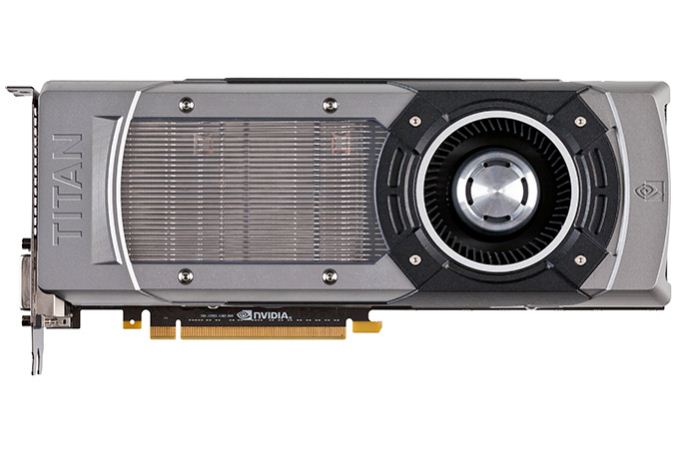
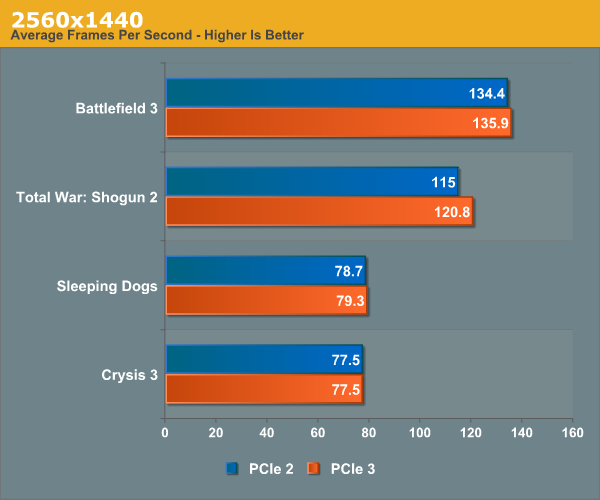
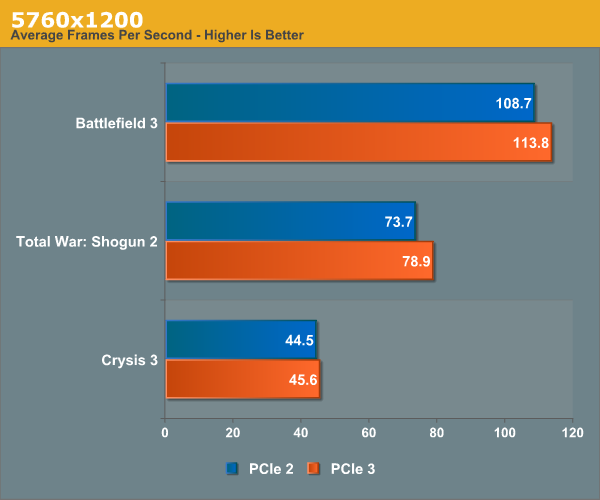

 Quote
Quote
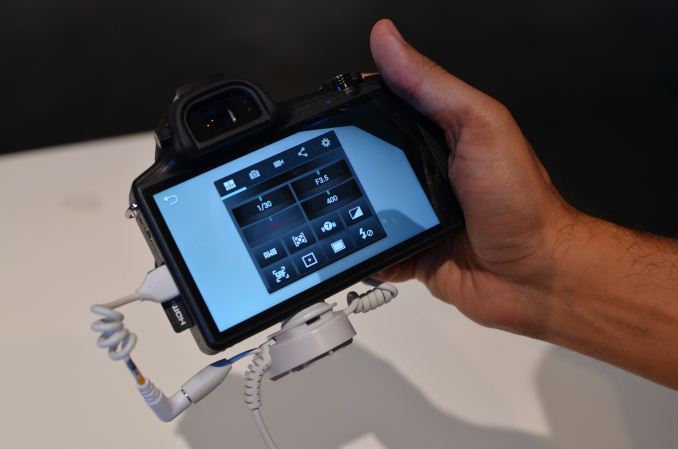
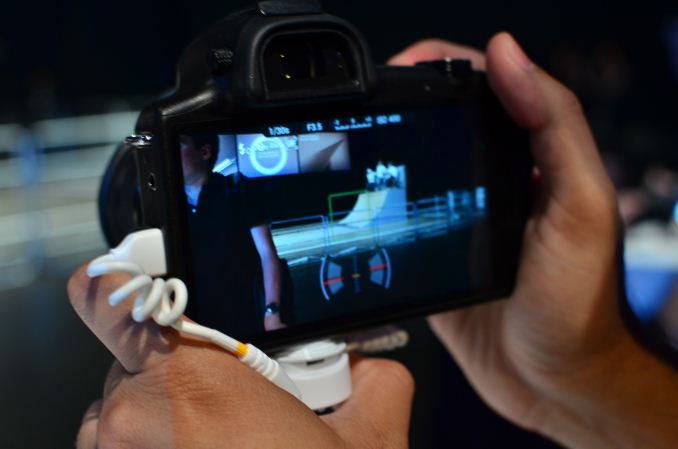






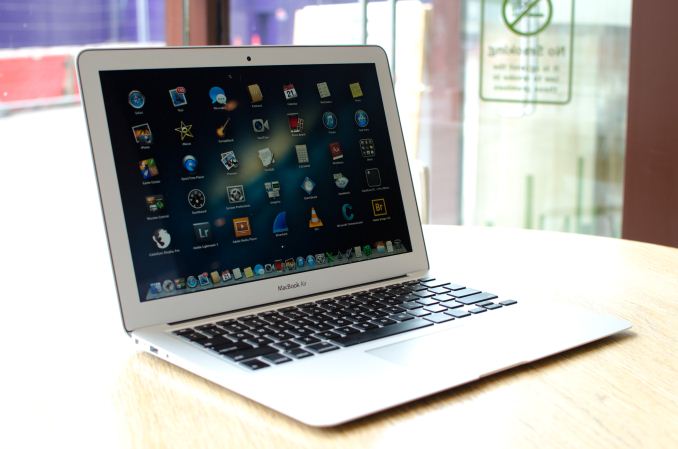
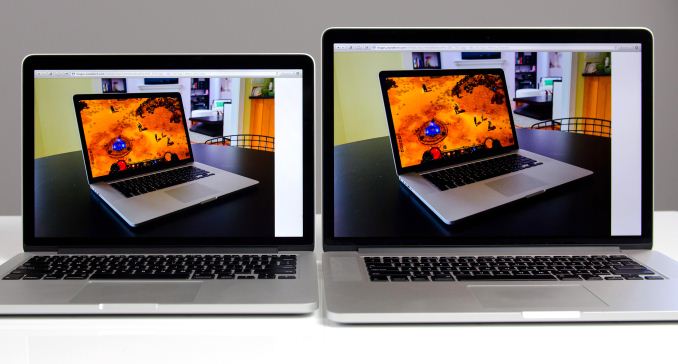

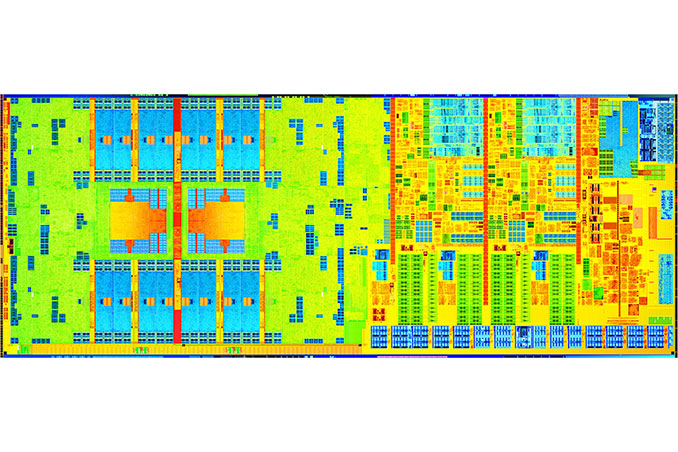
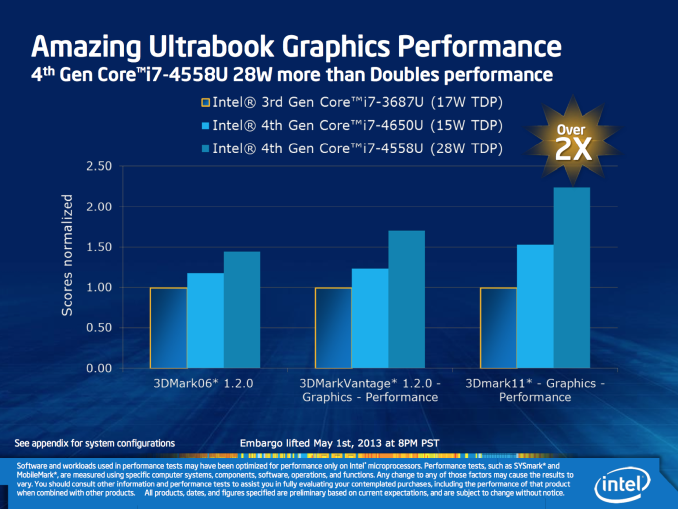
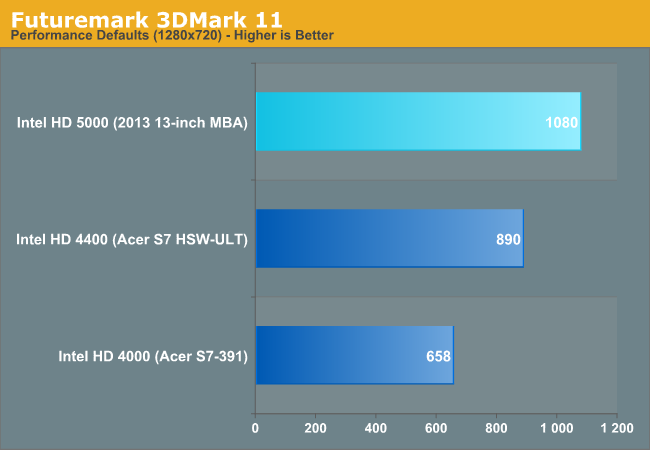
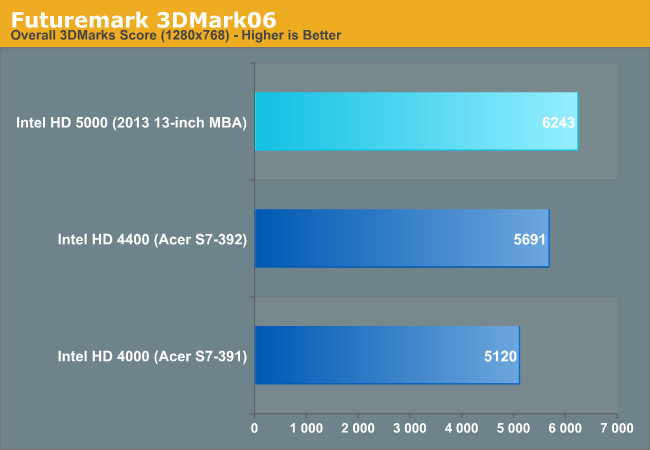


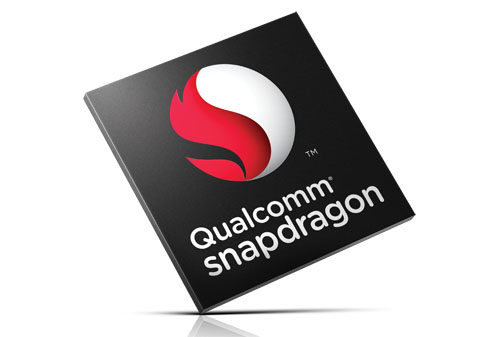
















Bookmarks